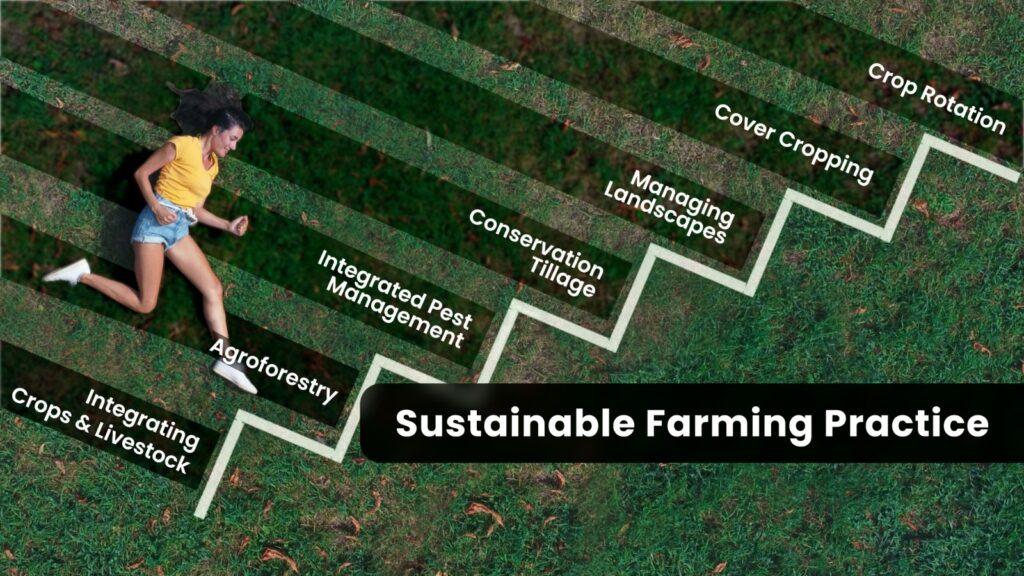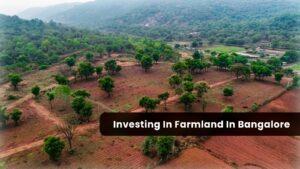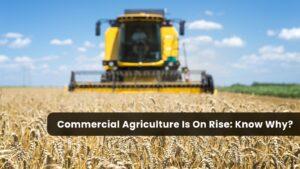As we work to lessen our influence on the environment and protect the long-term health of our planet, sustainable farming methods are becoming more and more crucial. You may raise crop yields and soil health as well as lessen your impact on the environment by putting these 7 sustainable farming techniques into practice. Start changing things right away!
Crop Rotation
In order to practice sustainable farming, multiple crops are sown in the same field in a predetermined order. By splitting your fields into distinct portions and planting a different crop in each section every year, you can rotate your crops. This improves soil fertility, lessens insect and disease pressure, and prevents soil erosion. You may lessen the need for synthetic fertilizers and pesticides, which can have detrimental effects on the environment and public health, by rotating your crops. As an illustration, you might plant maize in one area one year, soybeans the following year, and wheat the year after that. By allowing various crops to absorb different nutrients from the soil, it also contributes to increased soil fertility. Therefore, think about establishing a crop rotation plan if you’re seeking for a sustainable farming method that will assist your farm and the environment.
Cover Cropping
A sustainable farming method known as “cover cropping” entails the planting of particular crops with the aim of enhancing the fertility and health of the soil. Using cover crops, farmers may easily and productively increase the health and productivity of their soil. Cover crops are often sown between cash crops or during fallow times and can aid in reducing weed growth, preventing erosion, and enhancing soil structure. They also enrich the soil with organic matter, which can improve the availability of nutrients for subsequent crops. Clover, rye, and vetch are some of the more well-liked cover crops.
Farmers can lessen their reliance on industrial pesticides and fertilizers, which can have a harmful influence on the environment, by planting cover crops. In addition, cover crops can aid in the soil’s ability to store carbon, which helps lessen the impact of climate change. Although cover cropping can need a little more preparation and administration, the advantages for the farmer and the environment make it an investment worth making.
Integrated Pest Management
In order to effectively control pests, integrated pest management (IPM), a sustainable farming method, employs a variety of methods in addition to chemical pesticides. Crop rotation, using pest-controlling natural predators, and using pest-resistant crop varieties are a few examples of how to do this. Using IPM, farmers may conserve beneficial insects, apply less hazardous pesticides, and keep their farm’s ecology healthy.
Monitoring and early detection of pests, before they become a significant issue, is one of the fundamental tenets of IPM. This enables farmers to take measures before bugs seriously harm crops. IPM also involves adopting a variety of pest management methods rather than just using chemical pesticides. For instance, farmers can introduce natural predators like ladybugs or praying mantises to manage pest numbers or utilize crop rotation to break the insect life cycle. Farmers may safeguard important pollinators like bees and butterflies, use fewer toxic pesticides on their farms, and preserve a healthy ecosystem by implementing these practices.
Conservation Tillage
A sustainable farming method known as conservation tillage involves leaving crop residue on the soil’s surface rather than tilling it beneath after harvest. This aids in decreasing soil erosion, enhancing the health of the soil, and enhancing water retention. It also offers a natural mulch that can assist in suppressing weeds and lessen the need for herbicides by leaving the crop residue on the surface. No-till, strip-till, and reduced tillage are just a few of the methods that can be used for conservation tillage.
Reduced soil erosion is one of the key advantages of conservation tillage. Tilled soil may become brittle and susceptible to wind and water erosion. The soil can hold more moisture and is kept from eroding by putting crop residue on the top. Increased agricultural yields and better soil health can result from this. Additionally, by lowering the demand for machinery driven by fossil fuels, conservation tillage can aid in lowering greenhouse gas emissions. Overall, conservation tillage is an environmentally friendly agricultural technique that can also benefit farmers.
Integrating Crops and Livestock
Agro-pastoral or mixed farming is a sustainable farming method that involves combining crops and livestock. It provides a number of advantages, including improved resource and land use, increased soil fertility, diverse income sources, and improved climate change resilience. Implement a system of alternating crops and cattle on the same piece of land. This improves soil fertility, lessens the impact of disease and pests, and helps to optimize nutrient cycle. agricultural leftovers, such as straw, husks, and stalks, which are waste products of agricultural production, can be given to livestock. By doing this, the farming system becomes more efficient overall, and waste is reduced. These leftovers can be turned into important items like meat, milk, and eggs by livestock. Farmers can diversify their income streams by combining their animals and crops. Crop sales, livestock products, and byproducts like manure, which can be sold or used on the farm, are all sources of income.
Agroforestry
Trees, crops, and/or livestock are frequently used in agroforestry systems, creating a diversified canopy structure. Trees reduce water stress, soil erosion, and heat stress for crops and cattle by providing shade, windbreaks, and microclimate adjustment. By drawing nutrients from the soil’s depths and bringing them to the surface through leaf litter and root degradation, trees help the cycle of nutrients. By providing habitat for a range of plant and animal species, they support the conservation of biodiversity. Wildlife, helpful insects, and pollinators can find shelter, food supplies, and nesting locations in the system’s complex structure. This aids organic pest management and the general ecological balance of the farm.
Agroforestry implementation involves thorough planning that takes into account elements like tree species selection, spacing, and compatibility with crops or livestock. Agroforestry systems that are effective take into account the local climate, soil characteristics, market demands, and farmers’ preferences and ambitions. The secret to maximizing the advantages of agroforestry for sustainable farming is to combine scientific knowledge with traditional practices and local understanding.
Managing Landscapes
Adopting practices that support ecological balance, maximize resource use, improve biodiversity, and guarantee long-term productivity are all part of managing landscapes for sustainable farming. For agriculture to be sustainable, effective water management techniques must be put into practice. This covers methods like precision irrigation and drip irrigation, as well as water-saving strategies like mulching and rainwater collection. Water use is optimized, runoff is reduced, and waterlogging is avoided with proper irrigation schedule and monitoring.
Also Keep a close eye on the farming system’s performance in terms of sustainability. Analyse soil health, water quality, biodiversity indicators, and other pertinent metrics to pinpoint problem areas and monitor advancement towards sustainability objectives. To continually improve the sustainability of the landscape, modify management strategies in light of the findings.
Conclusion
Sustainable farming techniques strive to balance environmental stewardship, social responsibility, and economic viability to ensure the long-term survival of agriculture. We can build a more resilient and sustainable food system that serves both the current and the next generation by implementing these practices.
At Mogg’s Estates, we focus all of our efforts on developing sustainable farming practices. We frequently perform crop rotation, cover crop planting, and IPM to ensure the soil’s fertility and that no detrimental elements have an impact on the plantations’ growth. By lowering pollution, protecting biodiversity, and conserving water and soil resources, we hope to reduce adverse effects on the environment.



